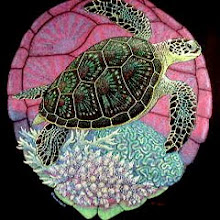The Disruptive Power of Second Life
Imagine a world in which it is possible to transform (create) yourself into anything imaginable. Wealth, creativity, fashion, popularity, attractiveness can all be yours if you are willing to step into the virtual world of Second Life.
According to Dr. Thornburg a disruptive technology is a new technology with the same functionality of an existing technology, but it is able to function more efficiently and eventually obsoletes the existing technology (Laureate Education Inc., 2009). In applying this definition to Second Life one must first determine what innovation it is displacing.
While it can be agreed upon that creating and living in a virtual world creates quite a disruption from the norm, what is it obsolescing precisely? Philip Rosedale (2008) describes Second Life as a place so different that anything could happen, and often does. Currently there are approximately 250,000 users mingling, transacting, networking all in an avatar body and in a virtual world.
While Second Life may not be a reality based organization it does provide the user with many opportunities, including real-life business, religious organizations, services and platforms to attend meetings (Rosedale, 2008). Therefore, Second Life will disrupt the manner in which people begin to congregate, learn, complete transactions and business dealings. By creating an avatar and joining the virtual world people will no longer need to attend meeting s at the office or worship at a predetermined time. Second Life will afford the member freedom from constraints of reality.
Since Second Life is still an emerging technology and not fully emerged into the general main stream population, I feel it will have several years before another technology arrives on the scene to make it obsolete.
Second Life has many benefits as well as tentative downfalls. On the negative side, this type of platform allows for anyone to create an avatar and assume an alternate personality. This alter ego has little to no repercussions in the real world for situations that arise while in Second Life, making it an excellent means for pedophiles, sex offenders, and those suffering with mental illness to lure in victims or deceive others. On the flip side, the positive possibilities are endless and include virtual classroom collaboration, instruction, meetings, worship services etc. By creating an avatar those with limited mobility or lack of transportation can connect with others and collaborate openly. Avatars can join schools and visit museums, galleries, parks. The possibilities are endless so long as common cautions are taken just as with any other social networking site.
References:
Rosedale, P. (2008). retrieved from http://www.ted.com/speakers/philip_rosedale.html.
Rosedale, P. (2008). Second Life [Video]. Retrieved from http://www.ted.com/index.php/talks/the_inspiration_of_second_life.html.
Laureate Education, Inc. (2009). Disruptive Technologies”. Emerging and future technologies, Baltimore: Author Retrieved from http://sylvan.live.ecollege.com/ec/crs/default.learn?CourseID=4199715&Survey=1&47=4246563&ClientNodeID=984645&coursenav=1&bhcp=1.
Thursday, July 29, 2010
Wednesday, July 14, 2010
Rhymes of History

Rhyme of History
The windmill is something that has been utilized for nearly 2000 years. Since its creation, the windmill’s main usage was to grind crops such as corn. By harnessing the power of the wind, a windmill was able to effectively grind raw grain into a fine powder, that was then used as flour for baking etc.
Windmills were also used to provide energy to early manufacturing businesses such as paper mills. Additionally, windmills were used to pump fresh water from underground or to drain excess water from areas that are close or below sea level (Holland).
Windmills are now being used to harness the power of the wind and convert this energy into electrical energy used to power towns and businesses. Windmills have been streamlined using new technologies and when multiple mills are constructed in the same location a wind farm is created. When the multiple turbines are placed in this farm, large quantities of power are produced. While wind farms are newer to the United States, they have been producing efficient, sustainable energy in countries located all over the world.
Living in a coastal community, and only about 45 minutes from the Atlantic City wind farm, I am hopeful that more locations will explore this type of sustainable energy producer.
The technology incorporated into the efficient working of a wind farm includes innovative computer programs, for example, that allow the turbines to locate and move into the direction of the wind, to stop and retract if wind force is above 45mph. Wind farms also rekindle the ancient windmill design and ultimately create electric energy.
By harnessing the wind and converting this into usable electric energy, the process can be likened to human’s desire to use materials from the environment for survival, much like ancient tribes or hunter-gatherers. Humans have always been intrigued by forces of nature and by coupling these forces with innovative technologies have give way to sustainable power that can be used to power homes, businesses, and vehicles.
In relating this concept to the next 5,000 days of the web…
Much like Kelly proclaimed, the wen is only in infancy with much potential in the next 5,000 days. With the increase in technology of the web comes many factors including greater codependency on the web for survival. With a greater concern for the environment and continued human existence, one must begin to realize the necessity to use technology to harness nature’s energies and convert them to usable forms. Much like the next 5,000 days of the web will be determined by advancing technologies so will our ability to become self-sustaining, all resulting form the invention of newer technologies.
http://www.alternative-energy-news.info/technology/wind-power/wind-
farms
http://www.acua.com/acua/index.aspx
http://www.acua.com/acua/content.aspx?id=492&ekmensel=c580fa7b_20_88_btnlink
Kelly, K. (2007, December). The next 5,000 days of the Web [Speech]. Speech delivered at the EG 2007 Conference, Los Angeles. Retrieved July 10, 2010 from http://www.ted.com/index.php/talks/.
Thornburg, D. (2009b). Rhymes of History. Laureate Education, Inc. Retrieved July 8, 2010, from
http://sylvan.live.ecollege.com/ec/crs/default.learn?CourseID=4199715&Survey=1&47=4246563&ClientNodeID=984645&coursenav=1&bhcp=1
Subscribe to:
Comments (Atom)
